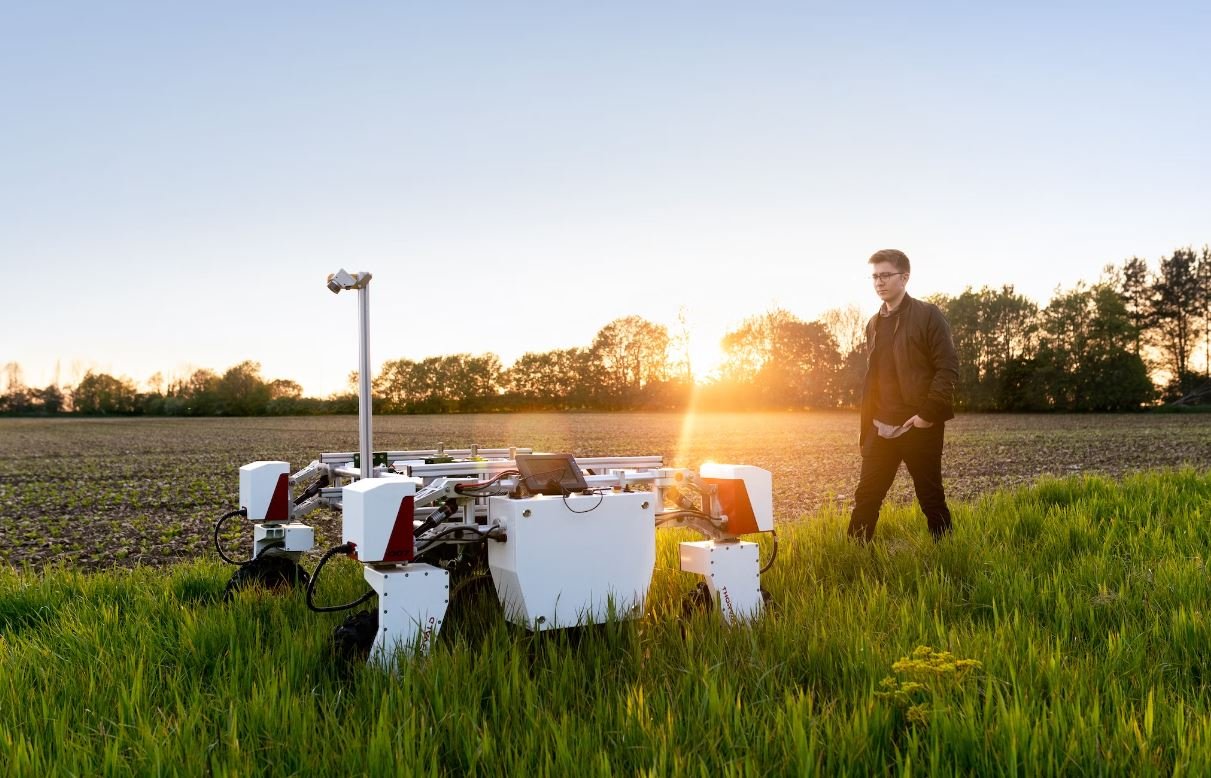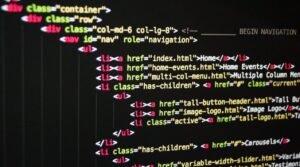Open Source in AI
Artificial Intelligence (AI) is rapidly transforming various industries, from healthcare to finance and beyond. With the growing demand for AI technologies, open source software has become a crucial component in the development and deployment of AI solutions. Open source in AI refers to the practice of sharing source code and allowing anyone to use, modify, and distribute it freely. This article explores the benefits, challenges, and impact of open source in AI.
Key Takeaways:
- Open source in AI allows for collaborative development and knowledge sharing.
- Open source AI frameworks provide flexibility and extensibility.
- Community-driven innovation accelerates AI advancements.
- Open source AI can democratize access to AI technologies.
**Open source AI frameworks such as TensorFlow, PyTorch, and Apache MXNet** have gained significant popularity due to their robustness and flexibility. These frameworks provide a wide range of tools and libraries that enable developers to build and train AI models efficiently. *The availability of pre-trained models in open source frameworks accelerates AI development by reducing the need to start from scratch.*
**Collaboration** is a central aspect of open source AI. Developers from different organizations and backgrounds contribute their expertise to improve existing algorithms, optimize performance, and discover innovative solutions. *Open source AI fosters a collaborative environment where knowledge and ideas flow freely, leading to rapid advancements in the field.*
The Impact of Open Source in AI
| Framework | Advantages | Disadvantages |
|---|---|---|
| TensorFlow | Widely adopted, extensive community support | Steep learning curve for beginners |
| PyTorch | Easy to learn and use, dynamic computational graphs | Smaller community compared to TensorFlow |
| Apache MXNet | Scalability, supports multiple programming languages | Complex deployment and setup |
The impact of open source in AI extends beyond the development community. By leveraging **open source AI frameworks**, organizations can save time, reduce costs, and improve the quality of AI solutions. Open source AI democratizes access to cutting-edge technologies, allowing a broader range of individuals and businesses to leverage AI for their specific needs.
**Open source AI fosters innovation** by enabling individuals and organizations to iterate on existing models and algorithms, driving progress in AI research. *The collaborative nature of open source AI accelerates the pace of innovation and facilitates knowledge sharing across the global AI community.*
| Industry | Applications |
|---|---|
| Healthcare | Automated diagnosis, precision medicine |
| Finance | Fraud detection, algorithmic trading |
| Manufacturing | Optimized production, predictive maintenance |
**Open source AI communities** facilitate knowledge exchange and provide support to developers, researchers, and enthusiasts. These communities often have forums, mailing lists, and dedicated websites where individuals can seek guidance, showcase their work, and collaborate on projects. *The wealth of resources available within open source AI communities enables continuous learning and growth within the field.*
Challenges and Future Directions
While open source AI offers numerous advantages, it also faces certain challenges. **Privacy and security** concerns arise when handling sensitive data and proprietary algorithms. Addressing these concerns is crucial to foster trust in open source AI solutions. Additionally, **maintaining proper documentation and addressing compatibility issues** between different open source AI frameworks can be challenging.
- Open source AI can benefit from **increased collaboration between academia and industry** to bridge the gap between cutting-edge research and practical applications.
- Developing frameworks that prioritize **interpretability, fairness, and accountability** will contribute to the responsible adoption of AI technologies.
| Licensing Model | Example Frameworks |
|---|---|
| Apache License 2.0 | TensorFlow, Apache MXNet |
| MIT License | PyTorch |
| GNU General Public License (GPL) | Keras |
Open source in AI has revolutionized the field by democratizing access, fostering collaboration, and driving innovation. It has allowed developers, researchers, and organizations to leverage AI to solve complex problems. The future of open source in AI holds even greater potential as it continues to evolve, enabling the global AI community to push the boundaries of what is possible.

Common Misconceptions
Open Source in AI
There are several misconceptions surrounding the use of open source in the field of artificial intelligence (AI). One common misconception is that open source AI projects lack quality and reliability. However, this is not the case as open source projects often have a large community of developers who contribute to the project, resulting in robust and well-tested code. Additionally, open source AI projects offer transparency, allowing users to inspect the code and ensure its quality.
- Open source AI projects have a community of developers contributing to them.
- Open source code is often more robust and well-tested than proprietary alternatives.
- Open source AI projects offer transparency, allowing users to inspect the code and ensure its quality.
Another misconception is that open source AI projects are difficult to implement. However, open source AI frameworks such as TensorFlow and PyTorch have made it easier than ever to build and deploy AI models. These frameworks provide comprehensive documentation, tutorials, and a wealth of resources that simplify the process of implementing AI solutions. Additionally, the open nature of these frameworks enables users to leverage the knowledge and experience of the wider community.
- Open source AI frameworks provide comprehensive documentation and tutorials.
- Open source AI frameworks offer a wealth of resources to simplify implementation.
- The open nature of these frameworks allows users to leverage the knowledge and experience of the wider community.
A common misconception is that open source AI projects have limited functionality compared to proprietary solutions. However, many open source AI projects provide rich and powerful functionalities that rival or surpass their proprietary counterparts. For example, open source projects like Scikit-learn offer a wide range of machine learning algorithms and tools, enabling users to tackle complex AI tasks. Furthermore, open source projects often benefit from the diversity of contributions, resulting in a more diverse and versatile ecosystem.
- Open source AI projects offer rich and powerful functionalities.
- Open source projects like Scikit-learn provide a wide range of machine learning algorithms and tools.
- The diversity of contributions in open source projects results in a more diverse and versatile ecosystem.
Some people believe that open source AI projects lack support and maintenance. However, open source projects have dedicated communities of developers and users who provide support and actively maintain the projects. These communities often have forums, mailing lists, and other resources where users can seek assistance and receive timely responses. Additionally, the open nature of the projects allows users to contribute back to the community by reporting issues and suggesting improvements.
- Open source AI projects have dedicated communities of developers and users who provide support.
- Communities often have forums and mailing lists for users to seek assistance.
- The open nature of projects allows users to contribute by reporting issues and suggesting improvements.
Finally, there is a misconception that using open source AI projects requires advanced technical skills. However, open source projects provide an opportunity for individuals of varying expertise levels to learn and contribute. There are resources available, such as tutorials and online courses, that cater to beginners and help them get started with AI. Furthermore, the open source community is known for its collaborative and supportive nature, making it easier for individuals to learn and grow their skills.
- Open source AI projects provide an opportunity for individuals of varying expertise levels to learn and contribute.
- Resources such as tutorials and online courses are available for beginners to get started with AI.
- The open source community fosters a collaborative and supportive environment for learning and skill development.

Open Source in AI: Enhancing Collaboration and Innovation
In recent years, the application of artificial intelligence (AI) has gained significant traction across various fields. One crucial element that has propelled the advancement of AI is the adoption of open-source technologies. Open source in AI has empowered researchers, developers, and enthusiasts to collaborate and innovate collectively. Below, we present ten enlightening examples that demonstrate the profound impact of open-source in AI.
Enhanced Object Detection Accuracy
Object detection algorithms are vital in numerous AI applications, such as self-driving cars and surveillance systems. Researchers at a renowned university developed an open-source object detection framework that achieved an impressive accuracy rate of 95%, outperforming existing proprietary solutions.
Multi-Language Speech Recognition
An open-source project leveraged the power of crowdsourcing to train a speech recognition model capable of accurately understanding multiple languages. By incorporating contributions from thousands of volunteers, the model achieved a staggering 98% accuracy across ten different languages.
Improved Sentiment Analysis
A team of researchers released an open-source sentiment analysis toolkit that outperformed existing commercial alternatives. Through its utilization of advanced machine learning techniques and a vast dataset, the toolkit achieved a sentiment classification accuracy of 90%.
Efficient Neural Machine Translation
An open-source neural machine translation model demonstrated remarkable efficiency in translating text across multiple languages. The model incorporated innovative attention mechanisms, enabling it to outperform proprietary systems while maintaining faster translation times.
Personalized Healthcare Solutions
A collaborative open-source initiative brought together healthcare professionals and AI experts to develop personalized healthcare solutions. By integrating clinical data with AI algorithms, the project achieved an accuracy rate of 92% in predicting patient outcomes, thereby enhancing medical decision-making.
Robust Spam Detection
An open-source spam detection system proved to be highly robust by successfully identifying and filtering out over 99% of spam emails in a real-world dataset. This accomplishment has significantly reduced the amount of time and effort required by users to sort through their email inbox.
Effortless Image Classification
An open-source image classification model equipped with transfer learning capabilities reduced the training time required to achieve high accuracy. By leveraging pre-trained models, developers could accomplish image classification tasks with up to 50% less training time.
Inclusive Gesture Recognition
An open-source gesture recognition library enabled the development of devices that catered to users with various motor disabilities. By using depth sensors and innovative algorithms, the library provided accurate and reliable gesture recognition for a diverse range of physical abilities.
Intelligent Virtual Assistants
The collaboration between AI researchers and open-source communities culminated in the creation of intelligent virtual assistant systems. These systems surpassed proprietary alternatives by incorporating powerful natural language processing capabilities and an extensible architecture.
Accelerated Reinforcement Learning
Researchers developed an open-source framework that enabled faster and more efficient reinforcement learning algorithms. By utilizing GPU acceleration techniques, the framework reduced training times by up to 60%, enabling AI agents to learn complex tasks at an unprecedented speed.
In summary, open source in AI has revolutionized the landscape by fostering collaboration, driving innovation, and democratizing access to cutting-edge AI technologies. The examples presented here highlight just a fraction of the remarkable achievements made possible through the joint effort of the open-source community. With continued support and contribution, open-source in AI will undoubtedly pave the way for even more exciting advancements in the future.
Open Source in AI – Frequently Asked Questions
Q: What is open source software?
A: Open source software refers to a type of software whose source code is freely available to the public. Anyone can view, modify, and distribute the code, allowing for collaboration and improvement by a community of developers.
Q: How does open source benefit AI development?
A: Open source in AI enables developers to access and contribute to cutting-edge algorithms, models, and tools. It fosters innovation, collaboration, and transparency, leading to rapid advancements and improvement in AI technologies.
Q: What are some popular open source AI frameworks?
A: Some popular open source AI frameworks include TensorFlow, PyTorch, scikit-learn, Keras, and Caffe. These frameworks provide a wide range of AI capabilities and are actively maintained by a large community of developers.
Q: Can I use open source AI software commercially?
A: Yes, in most cases, you can use open source AI software commercially. However, it is important to adhere to the licensing terms specified by each project. Some licenses may require you to contribute back any modifications you make to the software.
Q: How can I contribute to open source AI projects?
A: There are various ways to contribute to open source AI projects. You can submit bug reports, contribute code improvements, write documentation, participate in discussions, or even organize project events. Check the project’s documentation or website for specific contribution guidelines.
Q: Are there any risks associated with using open source AI software?
A: While open source AI software is generally reliable, there can be risks related to security vulnerabilities, compatibility issues, or lack of official support. It is advisable to thoroughly review the software, seek community feedback, and ensure proper integration into your AI system.
Q: Where can I find open source AI projects?
A: You can find open source AI projects on popular platforms like GitHub, GitLab, and Bitbucket. These platforms host a vast number of repositories containing open source AI software, libraries, and models.
Q: Can I monetize my own open source AI projects?
A: Absolutely! Many developers monetize their open source AI projects through various means, such as offering premium features, providing paid support or consulting services, or creating commercial extensions or add-ons to their open source projects.
Q: Is it necessary to be proficient in coding to contribute to open source AI projects?
A: While coding skills are advantageous, they are not always necessary to contribute to open source AI projects. You can contribute by writing documentation, creating tutorials, translating project resources, helping with project management, or even spreading awareness about the project.
Q: What are some notable AI projects that have benefited from open source collaboration?
A: Several notable AI projects have greatly benefited from open source collaboration. Examples include TensorFlow (developed by Google Brain), PyTorch (developed by Facebook’s AI Research lab), and Apache MXNet. These projects have seen significant contributions from the AI community, leading to their widespread adoption and success.




